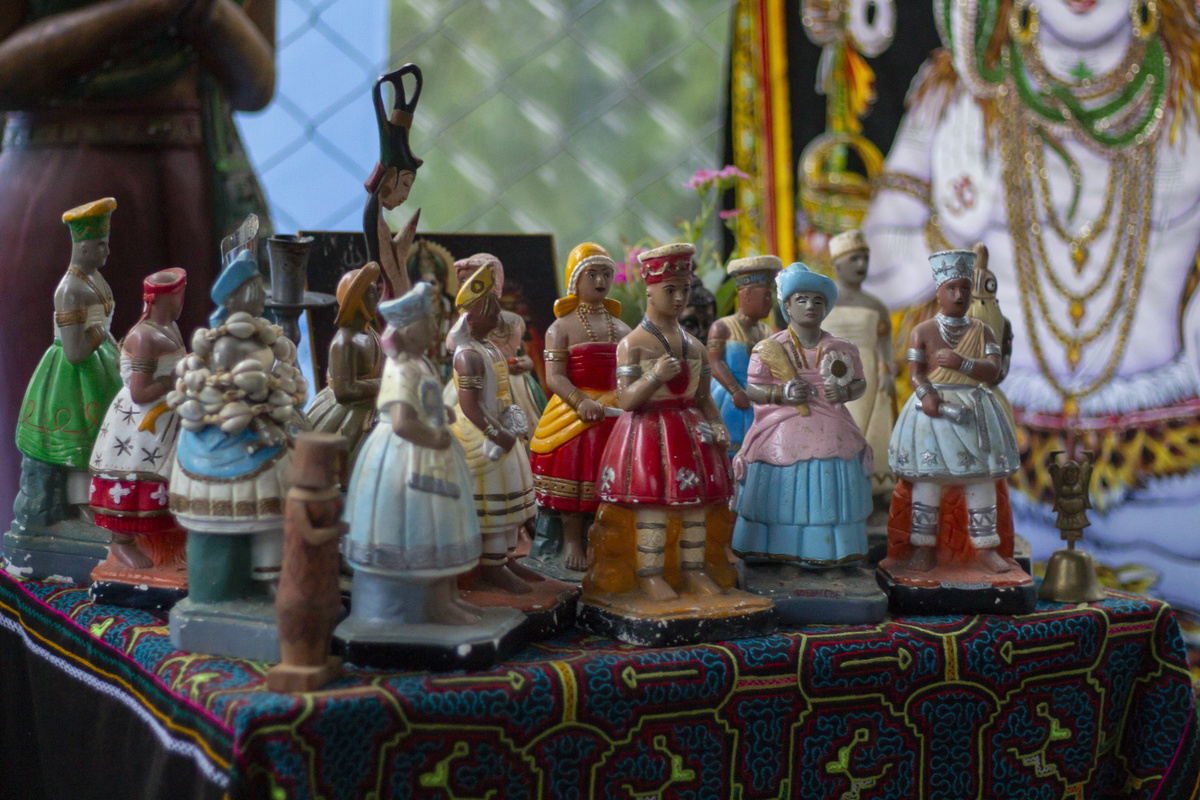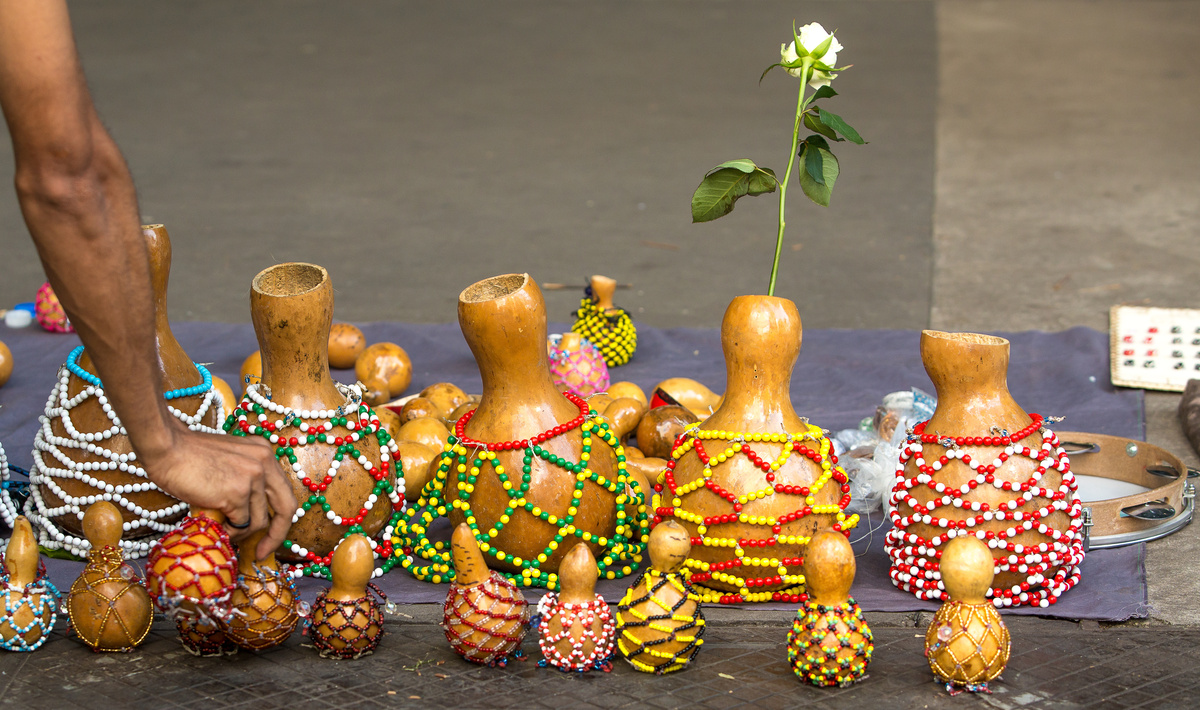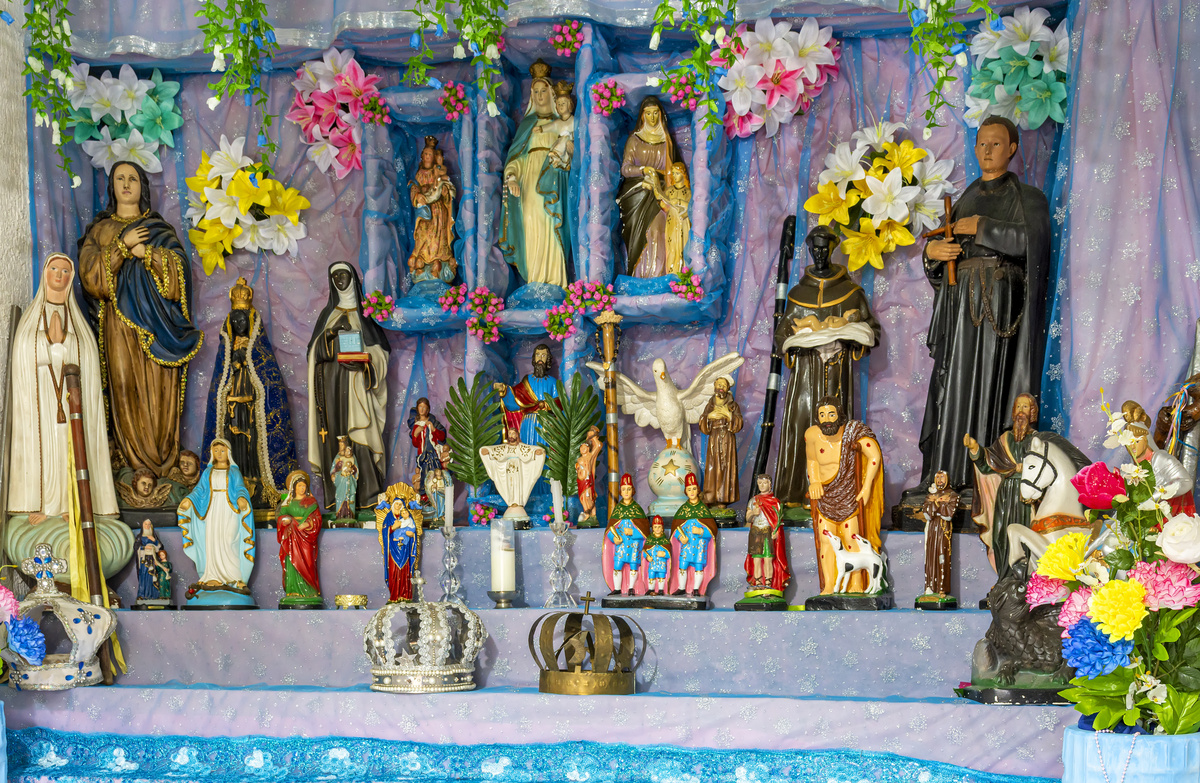Table of contents
What does ajayô mean?

Ajayô is a thank you, a salutation of completion for something that has been concluded. It is also equivalent to the expression "may it be so". In several editions of the TV show The Voice Brazil we heard the artist Carlinhos Brown shouting ajayô to the audience, popularizing the greeting among people of all ages.
Whoever thinks that the word ajayô is a jargon invented by the artist is mistaken. This word has been present in Brazilian culture for many centuries, but specifically in the state of Bahia, however, it only became better known after the TV show.
The word has its origin and history little known despite being part of the rich cultural arsenal of our country. In this article, you will understand more about its meanings as well as those of other terms that are part of this scenario.
Origin of the word ajayô

The word ajayô has African origins and was incorporated into the Brazilian culture, still in formation, in the colonial period from the arrival of native Africans to the country. Read on to learn more about the history and other terms belonging to the Brazilian identity.
History
The expression ajayô is also spoken as part of the request for protection to Oxalá, one of the most important orixás among the tribes of Africa. These people were taken from their country and brought to Brazil as slaves. Having their bodies massacred and freedom stolen, their faith and native language were the only thing they could sometimes keep.
The slavery regime in Brazil caused free and unfree blacks to live mostly in regions of Bahia. This miscegenation allowed the African culture to be established. Thus, candomblé, capoeira, among other expressions, including the word ajayô, are spoken and practiced as a symbol of rescue in all senses.
Ojoyê
Ojoyê or ajoyê is a term used in candomblé to describe the caretaker of the Orixás. The term is of Yoruba origin, one of the largest ethnic groups in West Africa. This is a very important position in the terreiro, as the caretaker's function is to accompany, dance with, and also take care of the deity's equipment.
They are also known as ekedis, and this role is reserved for women. Being an ajoyê is equivalent to being a bridesmaid. Thus, their presence is indispensable, for besides presenting the entities, it ensures that both the orixás and the visitors to the terreiro are suitable and comfortable. It is also one of the most laborious positions in the religion.
Afoxé and Carlinhos Brown
Afoxé is an ancient manifestation of African culture, however, we know it as a rhythmic part of the music played in carnivals and in various events in the state of Bahia. The artist Carlinhos Brown, in turn, is from Bahia, and this is a musical record that belongs to his experience and which he proudly represents.
The word afoxé is of Yoruba origin and its appreciation is stronger in Salvador. It is part of the manifestation of resistance and religiosity of the black people in Brazil since the mid 1800's. The history that precedes the afoxé is deep and magical, the sounds of atabaque, agogô and dances are, in its essence, contagious and unmistakable.
What do ajayô, ojoyê and Candomblé have in common?

Ajayô and ojoyê are expressions used, in general, in candomblé. The latter, therefore, is a very old Afro-Brazilian religion with over 40,000 practitioners in Brazil alone and thousands of adherents around the world.
It is formed by groups, also called nations, in which each of them worship a deity. In this part of the article you will understand other terms used.
Who is Oxalá
Oxalá is known as the Great Orixá of man, faith, creation and spirituality. He is revered as the one who moves life in the sense of searching for the motivations of existence and love for others. Thus, the worship of him is celebrated on November 15.
Some umbandistas confirm that there is a certain syncretism between Oxalá and Jesus Christ. Oxalá was the first orixá created by God, Olorum, and he received the mission of being the creator of the world.
The earth, water and sea are, therefore, his work. Each Umbanda house uses a color to represent their orixás, however, traditionally, to designate Oxalá, the color used is white, because it symbolizes peace and his presence everywhere.
What is Yoruba and what is the relationship with Candomblé?
Candomblé is an adaptation of the cult of the Orixás based on the reality experienced by the black people here in Brazil with slavery and persecution. Currently, in Brazilian lands, there are the traditional religion of Yoruba and Candomblé, although both are of African matrix, they separated at a certain historical moment and therefore are different.
The Yoruba were important in the cultural formation of Brazil. These are ethnic groups living in Nigeria, the Republic of Benin and the Republic of Togo. However, the history of the Yoruba is spread all over America, but unfortunately this is because of the slave culture under which these people lived for many centuries.
The importance of ojoyês/ekedes in the terreiro
The Ojoyês or ekedes are important before, during and after the ritual of candomblé. It is also the position with the most responsibility, because as said before, they are the caretakers of the Orixás. They are in charge of all the work that occurs within the terreiro, therefore, cleaning, food and ornamentation are part of their activities.
Thus, to be an ekede is to be predestined to a great mission. Therefore, the care of visitors, physical integrity, and the teaching of children and beginners are part of their life. They have a social and religious role in candomblé.
Despite so much work, they occupy the highest position in the hierarchy within the terreiro, since they represent the mother and the spokesperson of the Orixás.
Are these terms also used in Umbanda?
In Umbanda, the term ekede is not used. Although this position exists, the name given to it is cambono and it can be held by man or woman, unlike in Candomblé. As for ajayô or ajoyê, the first is a positive greeting and the second is a position of the terreiro. Other words like these are inspired by the African language, but have become so popular as to gain new terminology.
Oxalá, however, is a deity worshiped in both Umbanda and Candomblé. His figure is male and represents intelligence and creativity, so the children of Oxalá also carry these traits. Perfection, union, family are gifts that come from this orixá, and his most known and appreciated quality is bravery.
Difference between Umbanda and Candomblé
The first major difference between these two religious manifestations is in the purpose. Thus, characteristics of ritual, worldview, customs and hierarchy of Candomblé have the mission to rescue the African culture. Umbanda, on the other hand, seeks the essentially Brazilian culture, and within its terreiro one finds the presence of the Indian, the country bumpkin, the Northeasterner and even the rascal from the slums.
Another difference between these two religions is in the worship of Oxalá. In Candomblé, as in Africa, he is seen as God himself, while in Umbanda he is like a force of nature, an energy, without a human form. There is also a relationship between the orixás of Umbanda with the saints of Catholicism, this, therefore, does not occur in Candomblé.
Other words that came from Yoruba

Undoubtedly, many African customs were assimilated into Brazilian territory. The Yoruba are one among many people who brought to the country their dialect, rhythm, dances and traditions that are still worshipped today.
They represent resistance and equality among all individuals. Here are other words that are already well known, but that came from this culture.
Abadá
The abadá was spoken in the language of the Yoruba to refer to the garments used in their rites and festivals. Interestingly, this word exists in Arabic and referred to people who were enslaved.
However, in Brazil the word continues to be used to indicate a garment. On this occasion, the abadá is the t-shirt worn at carnival events.
Acarajé
Acarajé is certainly a highly esteemed food in Salvador, but it came from the Yoruba dialect meaning "ball of fire". There is no doubt that the food was a gift from the African gastronomic specialty.
It became a symbol of Bahia, but in history it was an offering to the Orixás, and today, more than three centuries later, it is a historical heritage of the Candomblé people.
Babysitter
Babá in Yoruba refers to the father. The word also accompanies other terreiro expressions, the first and best known of these is "Babalorixá" to refer to the Father of Santo. "Babalawo" is the word for the Priest or Father of the Secret. Another candomblecist expression refers to the Little Father as "Babá Kekere".
Can only candomblecists speak ajayô?

Any adept person, with knowledge of the cause and candomblecist culture can speak ajayô. Respect and good intention in relation to this expression are fundamental to use it on the appropriate occasion.
With the popularization of the word by Carlinhos Brown, the feeling is of a certain permission to also appropriate its use. Although it was more disseminated through the program The Voice Brazil, it was already said long before that.
However, the salutation is spoken by an afoxé group called Filhos de Gandhy that has existed since 1949, and is still present in the carnival floats. During the parades you can hear them shouting ajayô in a synchronized way.
So, if you identify with the purpose brought by the expression, there is no problem in using it. Remember, however, to always maintain respect for the traditions and history that this greeting carries.

